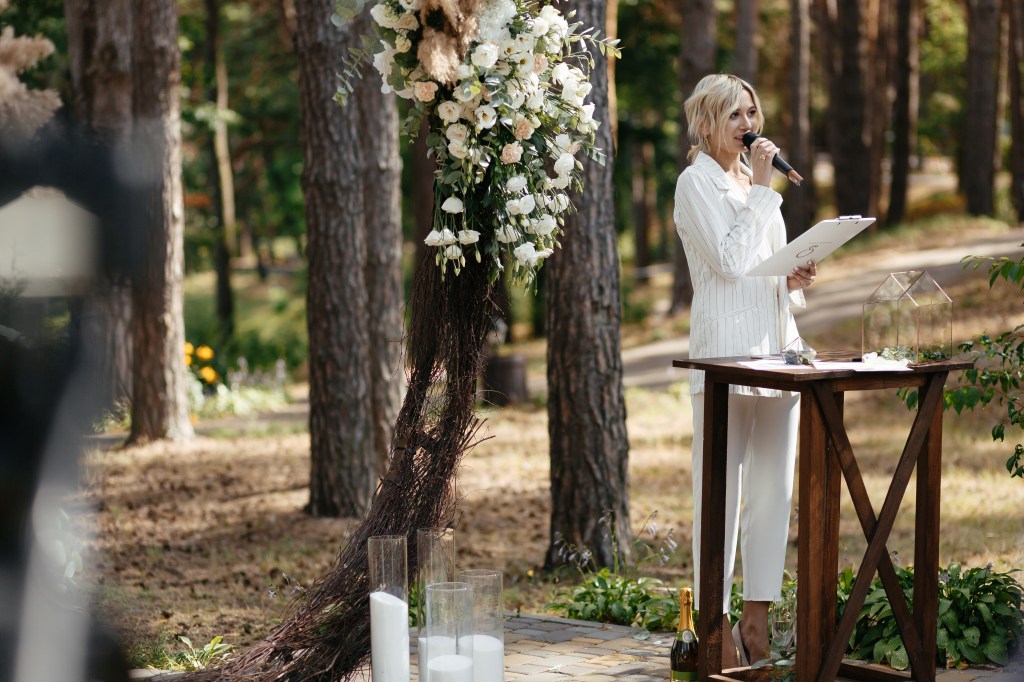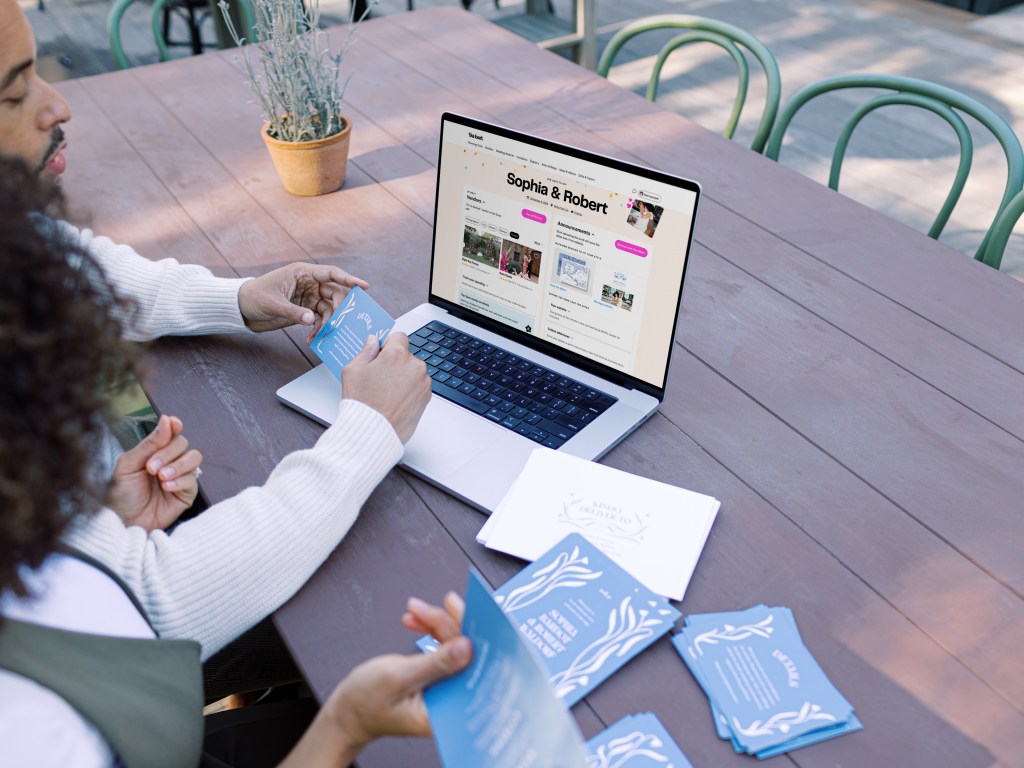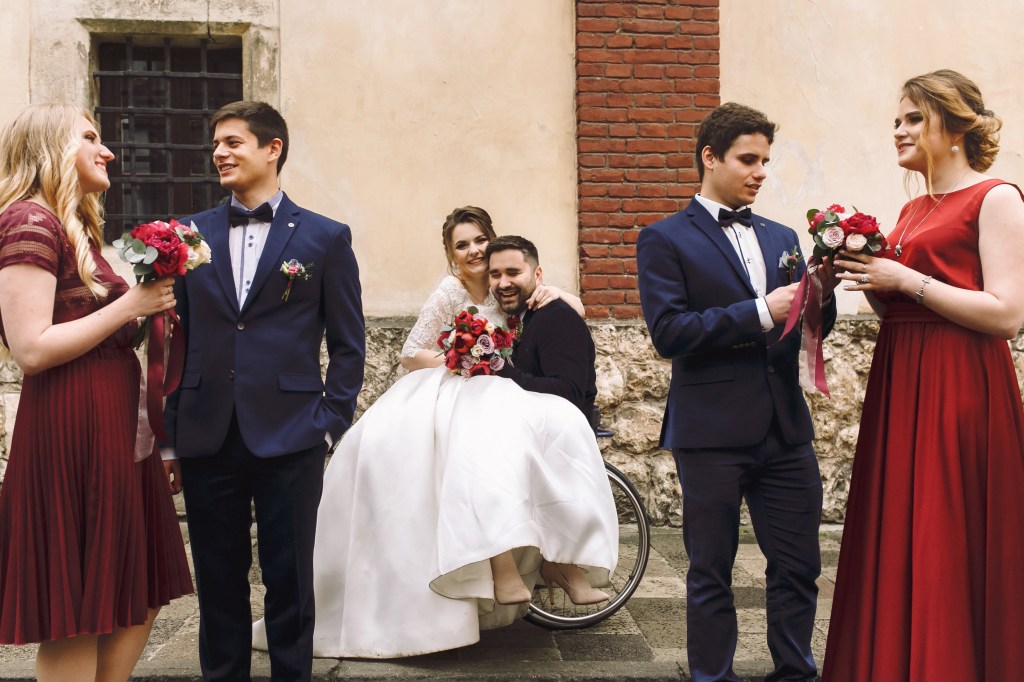The Modern Couples’ Love Language: A Guide for Wedding Pros

Many parts of the wedding planning process and the big day itself are tried-and-true. Couples read vows, exchange rings, take pictures and dance the night away. However, seasoned wedding pros know that the terminology and slang used to describe weddings is ever-evolving.
For example, recently, engaged couples have been using more unique and less formal language, reflecting the influence of social media and generational shifts. Let’s explore why some language has changed and define the latest terms engaged couples are loving.
The evolving nature of “love language”
Today’s couples are dipping their toes—or their ringed fingers—into more non-traditional weddings, which often means more informal and individualized terminology to describe them.
Why does this matter to wedding pros? Because to win the business of today’s couples, you have to speak their language.
If you don’t meet them where they are, on their “terms” (pun intended), they’ll find another vendor who will. That’s why it pays to not only mimic the language couples might use in an email or WeddingPro Inbox, but also showcase the values you stand for as a business. Because, if you’re a brand that prioritizes inclusivity, accessibility and awareness of social issues, you’ll be able to communicate with your couples in the way they prefer—and in a way that gets them to convert. Lingo adds to a vibe, and if the vibes are off right from your initial communications with a couple, they might go with another pro who they feel “gets them” better.
Especially for the digitally native, values-driven Gen Z, modern couples want their weddings to reflect who they are and what they stand for. This doesn’t just apply to all the details of their wedding—it also involves how they talk about themselves as a couple. This is a generation that practices what it preaches, after all!
Many couples, for instance, are putting their own spin on pet names or pivoting away from gendered terms. Consider the newer term “nearlywed,” which couples view as a more playful update to “engaged.” “Partner” has also become increasingly popular as a term representing a serious, committed relationship regardless of gender, engagement or marital status.
There’s also the obvious influence of celebrities and online creators. As you’ll see from the Beyoncé-inspired terms below, pop culture also surfaces new slang terms and other phrases that couples might adopt. We’re sure that Taylor Swift and Travis Kelce’s engagement will spark some new terms we’ll have to add to this list!
Top terms to know this engagement season
Now that we’ve probed why wedding terminology changes over time, let’s get into the lingo itself. You can even consider printing out this blog post and tacking it up in your office as a mini glossary reminder when you’re meeting with prospective couples.
Couple-specific sayings
How partners refer to themselves pre- and post-engagement no longer simply includes fiancé or fiancée. Today’s labels are more about inclusivity, individuality and even some levity. Consider mirroring these terms in emails and texts when appropriate.
- #Feyoncé: A popular social media hashtag that also riffs on Beyoncé’s name and “fiancé.”
- Fiancé Knowles: Couples can also further play on this Beyoncé-related name with “he’s my beyoncé,” “fianc-bey” or even combine the terms as “feyonce.”
- Nearlywed: An increasingly popular alternative to “bride and groom.”
- Spouse-to-be: A non-gendered modern alternative to the traditional terms.
- Wife/Husband-Elect: This term, which plays on “president-elect,” refers to the period between election day and inauguration day, and is a fitting metaphor for an engagement.
Hair talk
Similar to the makeup trends above, wedding hair is going less formal and more understated these days. Here are some of the phrases that brides might use to describe the style they want on their special day.
- Accessory-forward: A hairstyle that incorporates a major accessory, such as a jeweled barrette or headband.
- Deconstructed: As wedding makeup trends have evolved, so too have hairstyles. This look is intentionally styled to look undone and effortless, and can be applied to most styles, such as a braid or updo.
- Elevated waves: A modern twist on classic soft curls, presenting a more relaxed style with body that still looks polished and romantic.
- Posh ponytail: An elegant high or low ponytail styled either sleek and straight or romantic and wavy, depending on the desired vibe.
- The high chignon: A high, slightly messy twisted bun that serves as an alternative to the slicked-back low bun.
Makeup idioms
These social media-driven trends are likely to persist into the 2026 wedding season, so beauty pros, take note!
- Blush draping: This 1970s technique involves using blush to sculpt and lift the face, not just dotting apples of the cheeks.
- Glowy skin: A makeup finish that creates a luminous look.
- Skinimalism: This skincare-first approach uses minimal makeup to subtly enhance a natural-looking complexion.
- Soft glam: A versatile look that plays down a full-glam look with elements like soft, smoky eyes and nude or soft pink lips.
- Understated elegance: A chic look with clean lines, soft colors and a polished appearance
Photo and decor descriptors
Photography pros might already be familiar with some of these terms current couples use to describe their desired photo and decor setup. If not, here’s your cheat sheet!
- E-session or e-pics: Short for “engagement session” or “engagement pictures.”
- Flatlay: An overhead photo of wedding details, such as invitations, rings and accessories, arranged on a flat surface.
- Golden hour: The hour of light right before sunset, highly sought after by photographers for romantic, warm lighting.
- Room flip: The process of converting a single room from a ceremony space to a reception space while guests are at the cocktail hour.
Wedding party phrases
Couples no longer refer solely to their wedding party members in the traditional sense, and wedding parties are no longer always set up in the same way they once were. Plenty of brides are choosing a Man of Honor, while grooms might have a Best Woman. Be conscious of these options as you engage with prospective couples who land in your inbox.
- Best Person: A non-gendered alternative for a Best Man or Maid of Honor.
- Best Woman: A female equivalent of the Best Man.
- Bridesman: A man who is part of a bride’s party.
- Bridesperson / Groomsperson: Similar to “bridesmate,” these terms describe someone in a wedding party without specifying their gender.
- Flower Child / Flower Person / Flower Pal: A non-gendered term for a flower girl or boy.
- Groomswoman: A woman who is part of the groom’s party.
- Man of Honor: A male equivalent of the Maid of Honor.
- Person of Honor: Another title for the lead wedding party attendant that does not use gendered language.
Wedding planning slang
Wedding planning terms have evolved alongside weddings. Now that we no longer live in an era where most couples have a traditional ceremony at a place of worship or a large reception in a ballroom, alternative vernacular has emerged to describe non-traditional ways of saying, “I do.”
- Hard stop: Borrowed from corporate-speak, this refers to the strict time by which a wedding event must conclude and all guests must be off the premises.
- Major intention: This Gen Z-driven trend of smaller, more intimate weddings prioritizes a meaningful event over a large affair.
- Micro-wedding: A synonym of major intention, this is a small, intimate wedding, typically with 50 guests or fewer.
- Minimony: A tiny ceremony, likely with fewer guests than even a micro-wedding, that can lead to a larger celebration at a later date.
- Sequel wedding: The larger wedding celebration often held after a minimony.
- Unplugged ceremony: A no-phones, no-cameras, no-social media wedding.
- Wed-site: A play on the term wedding website.
Say “I do” to modern wedding terms
Now that you’ve learned about some of the major terms populating modern couples’ lexicon, consider incorporating them into your vendor marketing materials and communications with prospective couples. The more you become familiar with their language, the more you will build a genuine connection that reflects your commitment to honoring couples’ desire for a wedding experience tailored to them.
Let's grow your business together!
Start advertising on The Knot and WeddingWire, the top two wedding planning platforms.


